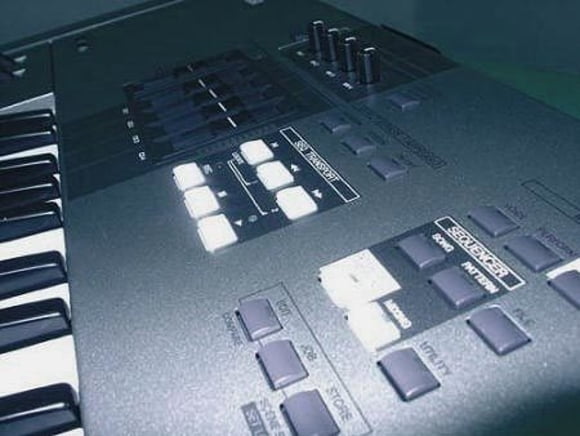4. Sequencing
If the sound generation engine is the heart of the workstation, then the sequencer is the brain. The first workstations often simply took the manufacturers hardware sequencer and bolted it onto the keyboard where MIDI sequences could then be stored using an onboard floppy disk drive. The storage requirements of current workstations are much more demanding however, needing to cope with large sample libraries and high quality audio files for playback. To this end, most units will include either a USB or FireWire connection, and/or space inside the unit to take a hard drive or other high capacity media. Although early models featured only basic MIDI sequencing, todays instruments offer a wealth of performance tools such as polyphonic arpeggiators and phrase generators, often with thousands of preset motifs, that can be directly integrated into the sequencers tracks. With larger LCD screens, the workstation sequencer comes into its own, allowing you to view and edit a tracks volume and pan for instance in a similar manner to a computer-based system.

Onboard sequencer specifications are impressive these days, with MIDI recording resolutions of up to 480ppqn (pulses per quarter note), storage for up to 500,000 events, and the ability to finely tune velocities and quantisation grooves. You can also overdub audio by sampling directly into the sequencer, enabling you to record vocals and acoustic instruments alongside your backing track. To supplement this facility, top of the range models often feature internal hard drives and gigabytes of RAM, allowing for long recording times not possible with previous generation instruments. Some workstations also include additional storage hardware such as CD-R or DVD-R drives for backup, or for burning discs of completed stereo mixes of your material.
Moving in another direction, companies like Yamaha are now providing greater integration with software such as Steinbergs Cubase, allowing you to easily transfer songs created on your workstation into tracks on a computer sequencer, and vice-versa for those instances when you want to take your studio work on the road. So rather than being seen purely as an alternative to the computer sequencer, the modern workstation could be viewed more as a very useful hardware element of a seamlessly integrated system.


